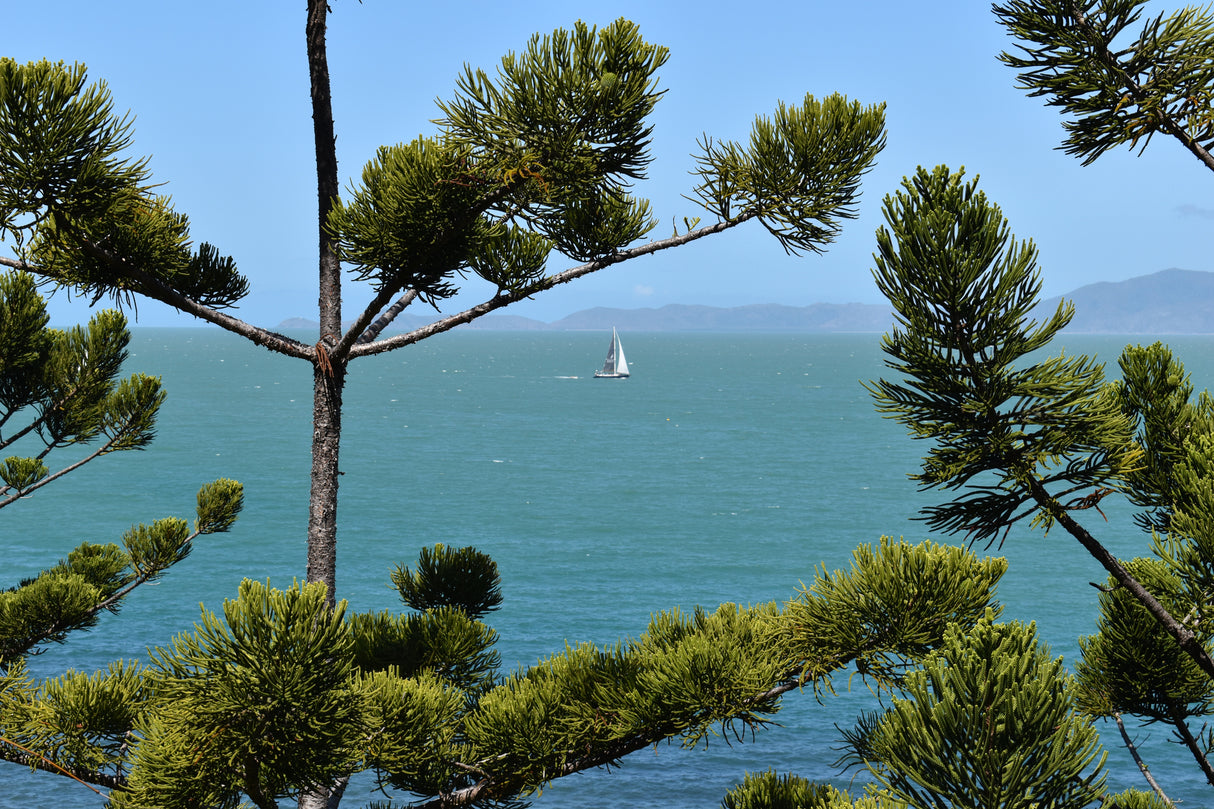Araucaria cunninghamii 'Hoop Pine'
The Araucaria cunninghamii, or Hoop Pine, is a towering evergreen conifer native to Australia, valued for its straight trunk, symmetrical form, and fine-textured foliage. Reaching heights of up to 60 meters in natural conditions, it is a popular choice for forestry, large gardens, and heritage landscapes. Its dark green, needle-like leaves and characteristic ringed bark create a striking architectural presence in any setting.
The Hoop Pine is a low-maintenance, long-lived tree ideal for large-scale projects, offering shade, windbreaks, and ornamental appeal.
Specifications:
- Height: 30–60 meters
- Width: 10–15 meters
- Native to: Eastern Australia and Papua New Guinea
- Foliage: Fine, needle-like dark green leaves
- Growth rate: Slow to moderate
Conditions:
- Soil: Prefers deep, well-drained soils; tolerates a variety of soil types
- Light: Full sun
- Water: Moderate; drought-tolerant once established
- Climate: Thrives in subtropical and tropical regions
Additional Features:
- Uses: Ideal for forestry, windbreaks, feature planting, or avenue designs
- Spacing: Plant 10–15 meters apart for optimal growth
- Low Maintenance: Minimal pruning required; naturally forms a tidy, straight shape
- Longevity: Extremely long-lived, providing enduring landscape value
- Environmental Benefits: Provides shade, windbreaks, and wildlife habitat
- Cultural Significance: Historically used in timber production for its durable wood
The Hoop Pine is a versatile and iconic tree, perfect for creating grand, sustainable landscapes and serving as a lasting legacy in large-scale plantings.
The Benefits Of Buying An Advanced Tree
The Process Of Transplanting A Mature Tree
Identify the Tree's Root Zone
Identify the Tree's Root Zone
Before you begin, it's essential to identify the root zone or root ball of the tree. This is the area where the majority of the tree's feeder roots are located. It is typically estimated as 1 foot of root ball diameter for each inch of tree trunk diameter.
Prune the Roots
Prune the Roots
Root pruning should occur a few months before the actual move, ideally in the dormant season. This involves cutting a trench around the root zone to encourage the growth of new feeder roots, which will help the tree to establish itself in its new location.
Prepare the Tree
Prepare the Tree
Prior to digging, prune dead or excessive branches from the tree. This reduces the tree's overall mass, making it easier to handle, and decreases water loss post-transplant.
Dig Around the Root Ball
Dig Around the Root Ball
After determining the root ball's size, begin digging around it. Try to retain as much soil around the roots as possible. The depth should ideally get under the root system but be feasible for lifting.
Undercut the Root Ball
Undercut the Root Ball
Once you've dug around the periphery of the root ball, begin undercutting to sever the remaining roots beneath it.
Lift the Tree
Lift the Tree
With the root ball freed, carefully lift the tree out of the hole. For large trees, this will likely require machinery like a tree spade or crane. Always lift the tree by the root ball, not the trunk.
Prepare the Tree for Transport
Prepare the Tree for Transport
Once the tree is out of the ground, it's critical to protect the root ball to prevent damage. Wrap it in burlap and secure it with twine, wire or steel basket. This not only holds the root ball together but also helps retain moisture.
Water the Root Ball
Water the Root Ball
Prior to transportation, water the root ball thoroughly to ensure the roots stay moist.
Transporting the Tree
Transporting the Tree
Load the tree carefully onto a truck or trailer for transport. The tree should be securely positioned to avoid damage during transit. The tree should ideally be planted in its new location as soon as possible to minimize stress and increase its chance of survival.


